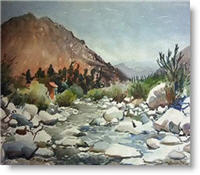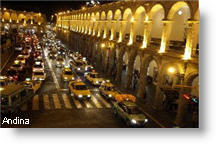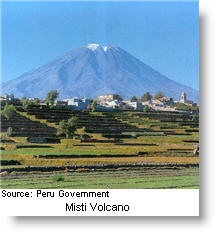 For Arequipeños “abroad” – and that category includes those in Lima – this month is a celebration of a special identity. The published program of events in La Ciudad Blanca, as Arequipa is known, stretches over 29 days, peaking at the official Aniversario of August 15 with its magnificent street parades of dancers from all round the world.
For Arequipeños “abroad” – and that category includes those in Lima – this month is a celebration of a special identity. The published program of events in La Ciudad Blanca, as Arequipa is known, stretches over 29 days, peaking at the official Aniversario of August 15 with its magnificent street parades of dancers from all round the world.
In our series on Peruvian History we pay tribute to the city and department of Arequipa, which has, in just 30 years, grown from 200,000 to over one million. The linguistic background of the expanded population includes that of Quechua and Aymara. Increasingly there are groups who celebrate historical roots going back much further than the 470 years proclaimed by the Municipalidad.
So if we are to talk about the history and heritage of contemporary Arequipeños rather than, say, the archaeological past of the city area, we must embrace Churajón and Pukara as well as the better known Tiawanaku, Huari and Inca.
The other year I was taken by an Arequipa “republican group” to the now dilapidated buildings of “old Churajon” just off the pilgrimage route to the Virgin of Chapi. There we celebrated the Quince de Agosto and learned few words of Puquina, one of the regional languages until the eighteenth century. The Jesuits ran this site as a mission until they were thrown out and replaced by the Franciscans. It is said the quality of the “música sagrada” declined thereafter.
 Although you may rightly suspect that Arequipa today would prefer huaynos spiced up with Peruvian Cumbia, there is still nostalgia at this time of year for the Carnaval Arequipeño or the wistful melodies of the ever-so-traditional Yaraví, sung as the sun sets over Yanahuara.
Although you may rightly suspect that Arequipa today would prefer huaynos spiced up with Peruvian Cumbia, there is still nostalgia at this time of year for the Carnaval Arequipeño or the wistful melodies of the ever-so-traditional Yaraví, sung as the sun sets over Yanahuara.
Abroad, the Arequipeño will even sing from the same song-book as the Limeño: the “the unofficial anthem of Peruvians abroad” –Todos Vuelven.
Todos vuelven a la tierra en que nacieron,
al embrujo incomparable de su sol,
todos vuelven al rincón donde vivieron,
donde acaso floreció mas de un amor.
This recording is by the Morochucos. If you are from Arequipa (and perhaps over a certain age) you will now be crying out for a recording of the Davalos to complete the nostalgia trip: Río de Arequipa, Pampeña; or an earlier recording of Todos Vuelven by the great Jesús Vásquez (“the queen and lady of creole song”) and Victor Dávalos. And to complete the program for the Día de Arequipa perhaps there is just space to include the immortal Chabuca Granda singing about the “white city”. As a final note . . .
 The demographic transformation of the last 30-50 years has produced the greatest change seen in Arequipa for some centuries. During this period the nationalization of the rail system and the reform of the haciendas dealt a body blow to the local economic elite. Although Arequipa was left largely alone by Sendero Luminoso, its economy went into further decline until about five years ago.
The demographic transformation of the last 30-50 years has produced the greatest change seen in Arequipa for some centuries. During this period the nationalization of the rail system and the reform of the haciendas dealt a body blow to the local economic elite. Although Arequipa was left largely alone by Sendero Luminoso, its economy went into further decline until about five years ago.
As this is a special time for Arequipa, let us give it a small treat – in fact, what the Mistianos enjoy most – the Last Word:
“Arequipa is undoubtedly Peruvian, but it is above all…. Arequipeña, unique and singular with beautiful landscapes and contrasts, of singular architectural beauty, and monumental surrounded by three majestic volcanoes, the Chachani,Misti and Pichu Picchu.” (From the official website.)_____________________________________
 Paul Goulder: Academic and specialist on Latin America and Peru. Last academic posts: ENSCP-Paris; King’s College, University of London; UNSA, Arequipa, Peru. Also not-for-profit work in ecology, development and education in UK and Peru.
Paul Goulder: Academic and specialist on Latin America and Peru. Last academic posts: ENSCP-Paris; King’s College, University of London; UNSA, Arequipa, Peru. Also not-for-profit work in ecology, development and education in UK and Peru.





